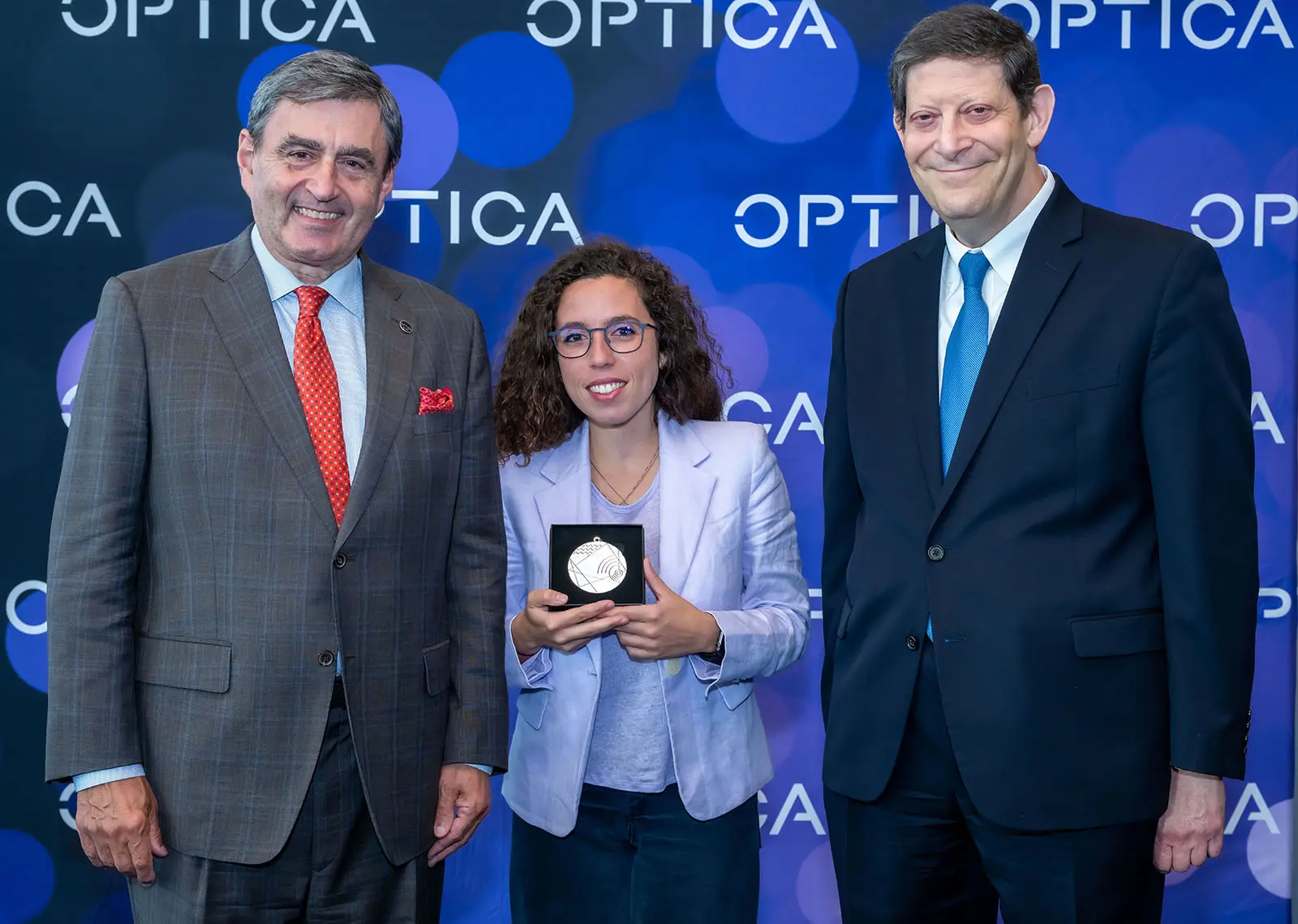Nanotechnologies and two-dimensional materials take entangled photon sources on chip
Chiara Trovatello is recipient of the 2024 Optica Foundation Challenge Award for her project q-POLIS

The importance of quantum technologies and their impact on scientific research and society are growing at an impressive pace. Key applications like quantum information, computing, cryptography and spectroscopy, rely on entangled photon pairs, or qubits. One efficient approach for entangled photon pair generation is using a laser and a nonlinear crystal, to induce a nonlinear process known as spontaneous parametric down-conversion.
The miniaturization and on-chip integration paradigm, which has dominated the world of electronics, is now shifting to the field of photonics. However, the macroscopic thickness of the nonlinear crystals typically used to generate entangled photon pairs is on the order of a few millimeters, or even centimeters, limiting further technology development and on-chip integration.
Chiara Trovatello, recipient of the 2024 Optica Foundation Challenge Award, aims to tackle this challenge with her project “Quantum-entangled Photon-pairs On-chip based on Layered Integrated Semiconductors” (q-POLIS). The US$100,000 prize honors exceptional ideas that harness optics and photonics to address global challenges. Optica Foundation Challenges drive new, impactful scientific discoveries with the potential to transform our world. Chiara Trovatello has received the prize to address the challenge of integrating miniaturized entangled photon sources directly onto an ultracompact photonic chip.
q-POLIS will implement entangled photon pair sources based on nano-engineered two-dimensional materials, like Transition Metal Dichalcogenides (TMDs), directly onto universal silicon photonics circuitry. TMDs are layered materials which are having a transformative impact in the field of nonlinear optics, because of their large optical nonlinearity enabling similar efficiencies as standard bulk crystals but within micron-thick crystals: a thousand times thinner!
“Producing photon pairs directly on chip will be an enabling technology for next-generation quantum photonic devices. Miniaturized entangled photon sources could address a major bottleneck in photonic quantum computing, impacting the future of secure quantum operations, creating entirely new digital protocols and technologies, and enabling significant advances in computing speed, with drastically lower energy dissipation.” Chiara Trovatello, project coordinator.
Chiara Trovatello, Marie Skłodowska-Curie Global Fellow, is conducting her research between Columbia University, as Associate Research Scientist, and Politecnico di Milano, as Assistant Professor of Physics. Beyond research, Trovatello advocates for open science, ethical research, equal representation and opportunities in STEM.